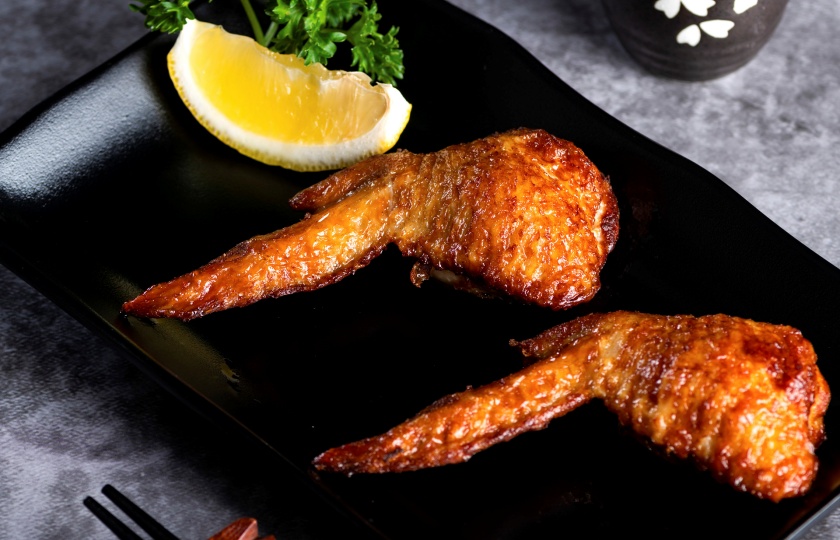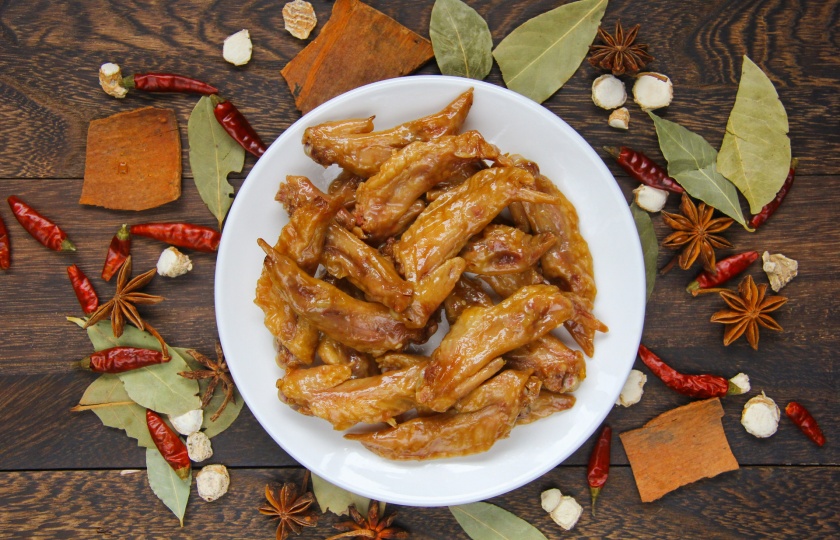Are Chicken Wings Fattening? A Health Perspective

Craving chicken wings at night but worried about gaining weight? Let’s take a closer look at whether chicken wings will make you fat.
Are Chicken Wings Fattening?
Whether chicken wings will make you gain weight depends on a few factors.
First, it’s important to know that chicken wings do contain some fat and calories. However, the fat in chicken wings is mainly concentrated in the skin. If you’re concerned about gaining weight, you can remove the skin before eating. Eating chicken wings in moderation generally won’t cause weight gain.
Second, the way chicken wings are cooked also affects their calorie content. Healthy cooking methods, like steaming or grilling, don’t add extra fat, so the calories and fat content will be lower. Occasionally eating them this way won’t lead to weight gain.
On the other hand, if you deep-fry chicken wings, the high temperatures and oil absorb a lot of fat, increasing their calorie and fat content. This could raise the calories from the typical 194 kcal per 100 grams to around 300 kcal, which could lead to weight gain if eaten in excess.
So, whether chicken wings will make you gain weight largely depends on the cooking method, portion size, and how often you eat them. Just keep these factors in mind, and you won’t need to worry too much about gaining weight.
How Many Calories Is 10 Pieces of Chicken Wings?
The number of calories in 10 chicken wings mainly depends on how they are cooked and their size.

On average, one standard-sized, skinless chicken wing contains about 43-55 calories. If you grill or use another healthy cooking method, 10 wings would contain around 430-550 calories.
However, if the wings are deep-fried, they absorb a lot of oil, which significantly increases their calorie content. Ten deep-fried chicken wings could have as many as 800-1000 calories or even more.
For a healthier way to enjoy chicken wings, it’s best to use an air fryer or an oven, as this reduces the amount of oil used, keeping the wings flavorful while controlling calorie intake.
What Is the Healthiest Way to Eat Wings?
The healthiest way to enjoy chicken wings is by reducing the use of oil. Here are a few recommendations:
Steamed Chicken Wings
This is the healthiest way to prepare chicken wings. Marinate the wings with a little ginger, green onion, and cooking wine. After marinating, steam the wings for 15-20 minutes. Steaming helps preserve the nutrients of the wings without adding extra fat or calories.
Grilled Chicken Wings
Grilling is also a healthy option. It’s best to use an oven and marinate the wings with olive oil, salt, black pepper, and other spices. Then, bake them until golden brown. Avoid adding extra oil while grilling, as this results in crispy skin and juicy meat.
Boiled Chicken Wings
Boiling is another healthy cooking method. Simply put the wings in a pot with water, ginger, and cooking wine, then cook for 10-15 minutes. Boiled wings can be paired with low-fat sauces, like lemon juice or yogurt, for a refreshing and tasty dish.
How Many Wings Should You Eat?
For an adult, if chicken wings are part of a meal, it’s generally recommended to eat 2-4 medium-sized wings. This portion size satisfies your taste buds without overloading your body.

If you’re on a diet, like trying to lose weight or working out, adjust the number of wings based on your goals and plan.
The size of the chicken wings also plays a role in portion control. If the wings are large, you can eat fewer of them. If they are small, you can eat a few more depending on your preference.
Are Wings or Drumsticks Healthier?
Nutritionally, both chicken wings and chicken thighs are rich in protein, vitamins, and minerals. Chicken wings contain more collagen, which is beneficial for skin and blood vessels, and also have a higher vitamin A content. Chicken thighs have more protein and slightly less fat, with more unsaturated fatty acids that benefit cardiovascular health.
In terms of calories, chicken wings are higher in calories, with about 210 kcal per 100 grams. Skinless chicken thighs, on the other hand, contain around 171 kcal per 100 grams. Chicken wings also have more fat, so if you’re concerned about calorie intake, chicken thighs are a healthier option.
When it comes to texture and eating experience, chicken thighs have firmer meat and are versatile in cooking methods like roasting, stewing, and pan-frying. When the skin is removed, they are lower in calories. While chicken wings are tender, their higher fat content makes them better for occasional indulgence.
Overall, chicken thighs are lower in calories and higher in protein, making them a better choice for those trying to lose weight or gain muscle. However, if you’re looking to boost your collagen intake, chicken wings are a great option.
Are Chicken Wings White Meat?
Yes, chicken wings are considered white meat.

White meat refers to meat that is tender with a relatively low fat content. Compared to red meat (like beef or lamb), chicken wings have a finer texture and lighter color.
However, it’s important to note that chicken wings are higher in fat, especially in the skin. If you're following a low-fat diet, it’s best to remove the skin before eating the wings.























